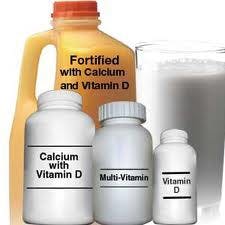Facts about heart health
By Maria Perno Goldie, RDH, MS
Coronary disease prevalence has declined in most areas of the U.S.(1) The age-adjusted prevalence of coronary heart disease in the U.S. has declined by roughly 10% in relative terms, from 6.7% in 2006 to 6.0% in 2010, according to the MMWR report.Based on self-reports from national telephone interviews, the estimates show notably significant relative declines of over 20% in West Virginia and Missouri. Some states showed actual increases in prevalence, like Maine with 14% and New Mexico with 11%, but these did not achieve statistical significance. From 2006 to 2010, CHD prevalence overall in the United States decreased from 6.7% to 6.0%. Prevalence varied substantially by sex (men, 7.8%, versus women, 4.6%), race (American Indians/ Alaska Natives, 11.6%, versus Asians or Native Hawaiians/Other Pacific Islanders, 3.9%), education (those with less than a high school education, 9.2%, versus those with more than a college degree, 4.6%), and state of residence, with prevalence generally greater in the South, the highest in Kentucky (8.2%) and the lowest in Hawaii (3.7%). Clinical implications are that prevention programs can be targeted at the states and populations with the greatest prevalence of CHD to meet the Healthy People 2020 objective of reducing the U.S. CHD death rate by 20%.What about aspirin and heart disease? Charles H. Hennekens, M.D., DrPH, was the founding principal investigator (PI) of the landmark Physician's Health Study and was the first to demonstrate that aspirin prevents a first heart attack.(2) He was also the first to demonstrate that aspirin prevents heart attacks, strokes, and cardiovascular deaths when given within 24 hours after onset of symptoms of a heart attack as well as to a wide variety of patients who have survived an event associated with a blockage in the heart, brain, or legs. In a recent article, 24 years after his influential publication in the New England Journal of Medicine, Dr. Hennekens discusses his first discovery that aspirin prevents a first heart attack, as well as all the ensuing research that has confirmed his initial landmark finding.
Coronary disease prevalence has declined in most areas of the U.S.(1) The age-adjusted prevalence of coronary heart disease in the U.S. has declined by roughly 10% in relative terms, from 6.7% in 2006 to 6.0% in 2010, according to the MMWR report.Based on self-reports from national telephone interviews, the estimates show notably significant relative declines of over 20% in West Virginia and Missouri. Some states showed actual increases in prevalence, like Maine with 14% and New Mexico with 11%, but these did not achieve statistical significance. From 2006 to 2010, CHD prevalence overall in the United States decreased from 6.7% to 6.0%. Prevalence varied substantially by sex (men, 7.8%, versus women, 4.6%), race (American Indians/ Alaska Natives, 11.6%, versus Asians or Native Hawaiians/Other Pacific Islanders, 3.9%), education (those with less than a high school education, 9.2%, versus those with more than a college degree, 4.6%), and state of residence, with prevalence generally greater in the South, the highest in Kentucky (8.2%) and the lowest in Hawaii (3.7%). Clinical implications are that prevention programs can be targeted at the states and populations with the greatest prevalence of CHD to meet the Healthy People 2020 objective of reducing the U.S. CHD death rate by 20%.What about aspirin and heart disease? Charles H. Hennekens, M.D., DrPH, was the founding principal investigator (PI) of the landmark Physician's Health Study and was the first to demonstrate that aspirin prevents a first heart attack.(2) He was also the first to demonstrate that aspirin prevents heart attacks, strokes, and cardiovascular deaths when given within 24 hours after onset of symptoms of a heart attack as well as to a wide variety of patients who have survived an event associated with a blockage in the heart, brain, or legs. In a recent article, 24 years after his influential publication in the New England Journal of Medicine, Dr. Hennekens discusses his first discovery that aspirin prevents a first heart attack, as well as all the ensuing research that has confirmed his initial landmark finding.
Hennekens discusses that since his first discovery from the Physician's Health Study of 22,071 apparently healthy men funded by the U.S. National Institutes of Health (NIH), there have been five additional large scale randomized trials worldwide, which include more than 90,000 men and women to confirm the conclusive benefit of aspirin to reduce the risk of a first heart attack by approximately one third. He served as the founding PI of the largest of these trials, the Women's Health Study of 39,972 apparently healthy female health professionals, which also was funded by the NIH. Any decision to use aspirin to prevent a first heart attack should be an individual judgment by the health care provider that weighs the clear benefit of reducing the risk of a first heart attack against the side effects of increased bleeding. Dr. Hennekens states that aspirin has a benefit for those with a 10-year risk of a first heart attack of 10 percent or more. The American Heart Association (AHA) guidelines support his conclusions regarding the role of aspirin in the prevention of a first heart attack. He also points out that 40 percent of Americans have metabolic syndrome, a collection of obesity, high blood pressure, abnormal blood lipids and insulin resistance, a precursor of diabetes. According to Hennekens, patients with metabolic syndrome have a 10-year risk of a first heart attack of 16 to18 percent.(2) According to Science Watch, Hennekens was the third most widely cited medical researcher in the world from 1995-2005, and five of the top 20 were his former trainees and/or fellows.(3) In a large, primary-prevention trial among women, aspirin lowered the risk of stroke without affecting the risk of myocardial infarction or death from cardiovascular causes, leading to a nonsignificant finding with respect to the primary end point.(4) An interesting finding in the subgroup analyses was that the most consistent benefit of aspirin was observed among women 65 years of age or older. This group of 4,097 women composed 10 percent of the study population yet had almost one third of the cardiovascular events.What about Vitamin D? Known to be important for bone health and in recent years also for heart protection, it may stop conferring cardiovascular benefits and could actually cause harm as levels in the blood rise above the low end of what is considered normal.(5) Increasing levels of vitamin D in the blood are linked with lower levels of a marker for cardiovascular inflammation, c-reactive protein (CRP). Healthier, lower levels of inflammation were found in people with normal or close to normal vitamin D levels. Beyond blood levels of 21 nanograms per milliliter of 25-Hydroxyvitamin D, considered the low end of the normal range for vitamin D, any additional increase in vitamin D was associated with an increase in CRP, a factor linked to stiffening of the blood vessels and an increased risk of cardiovascular problems. It is possible that the role of vitamin D supplementation to reduce inflammation is beneficial only among those with a lower serum 25(OH)D.
The American College of Cardiology Foundation (ACCF) and the American Heart Association (AHA) have jointly produced guidelines in the area of cardiovascular disease since 1980. The ACCF/AHA Task Force on Practice Guidelines (Task Force), charged with developing, updating, and revising practice guidelines for cardiovascular diseases and procedures, directs and oversees this effort. Writing committees are charged with regularly reviewing and evaluating all available evidence to develop balanced, patient-centric recommendations for clinical practice. Among the updates, the guidelines feature a "heart team" approach for patients with left-main or complex coronary artery disease. Under that approach, interventional cardiologists and cardiothoracic surgeons jointly review the patient and evaluate each treatment option's pros and cons. They then give that information to the patient, along with their recommendation.(6) And what about blood pressure? Differences in blood pressure readings taken from the left and right arms may be a sign of heart and blood vessel disease and death risk, according to a new review of recent research published today, January 30, 2012.(7) Researchers found that a difference of 15 points or more in the readings between the left and right arms raised the risk of peripheral vascular disease, a narrowing or blockage of the arteries, by two-and-a-half times. That same 15 point-difference in systolic readings (the top number in a blood pressure reading) also increased the risk of cerebrovascular disease by 60%. Cerebrovascular disease is associated with thinking problems, such as dementia, and an increased risk of stroke. Researchers say the results suggest that doctors should routinely compare blood pressure readings from both arms to prevent unnecessary deaths.
Although the practice of taking blood pressure from both arms as a part of heart disease screening has been adopted in Europe, and some guidelines in the U.S. recommend it, it is not routinely done in the U.S.In the study, British researchers examined 20 studies covering differences in systolic blood pressure between arms. The results showed that a difference of 15 points or more in the systolic readings between the left and right arms was associated with an increased likelihood of several heart-related risks, including: the risk of peripheral vascular disease was two-and-a-half times higher; the risk of cerebrovascular disease was 60% higher; and the risk of dying from heart and circulatory diseases rose by 70%. The risk of peripheral vascular disease was also higher when there was a difference in blood pressure readings of 10 points or more.(7)
If peripheral vascular disease is detected at an early stage, treatments such as stopping smoking, lowering blood pressure, or offering statin medication can reduce death rates. A difference in SBP of 10 mm Hg or more, or of 15 mm Hg or more, between arms might help to identify patients who need further vascular assessment. A difference of 15 mm Hg or more could be a useful indicator of risk of vascular disease and death.References
1. CDC. Prevalence of Coronary Heart Disease — United States, 2006–2010. MMWR, Weekly, Vol. 60, No. 40, October 14, 2011.2. Hennekens CH. Aspirin in the Primary Prevention of Myocardial Infarction. Clinical Chemistry January 2012 vol. 58 no. 1 303-304. 3. Most Cited Papers (10 years) – search.thomsonscientific.com/search. 4. Ridker PM, Cook NR, Lee I, Gordon D, Gaziano M, Manson JE, Hennekens CH, and Buring JE. Randomized Trial of Low-Dose Aspirin in the Primary Prevention of Cardiovascular Disease in Women. N Engl J Med 2005; 352: 1293-1304.5. Amer M, and Qayyum R. Relation Between Serum 25-Hydroxyvitamin D and C-Reactive Protein in Asymptomatic Adults (From the Continuous National Health and Nutrition Examination Survey 2001 to 2006. American Journal of Cardiology, Volume 109, Issue 2 , Pages 226-230, 15 January 2012. 6. Writing Committee ACCF?AHA. 2011 ACCF/AHA Guideline for Coronary Artery Bypass Graft Surgery: Executive Summary. J Am Coll Cardiol, 2011; 58:2584-261.7. Clark CE, Taylor RS, Shore AC, Ukoumunne OC, and Campbell JL. Association of a difference in systolic blood pressure between arms with vascular disease and mortality: a systematic review and meta-analysis. The Lancet, Early Online Publication, 30 January 2012. doi:10.1016/S0140-6736(11)61710-8.
1. CDC. Prevalence of Coronary Heart Disease — United States, 2006–2010. MMWR, Weekly, Vol. 60, No. 40, October 14, 2011.2. Hennekens CH. Aspirin in the Primary Prevention of Myocardial Infarction. Clinical Chemistry January 2012 vol. 58 no. 1 303-304. 3. Most Cited Papers (10 years) – search.thomsonscientific.com/search. 4. Ridker PM, Cook NR, Lee I, Gordon D, Gaziano M, Manson JE, Hennekens CH, and Buring JE. Randomized Trial of Low-Dose Aspirin in the Primary Prevention of Cardiovascular Disease in Women. N Engl J Med 2005; 352: 1293-1304.5. Amer M, and Qayyum R. Relation Between Serum 25-Hydroxyvitamin D and C-Reactive Protein in Asymptomatic Adults (From the Continuous National Health and Nutrition Examination Survey 2001 to 2006. American Journal of Cardiology, Volume 109, Issue 2 , Pages 226-230, 15 January 2012. 6. Writing Committee ACCF?AHA. 2011 ACCF/AHA Guideline for Coronary Artery Bypass Graft Surgery: Executive Summary. J Am Coll Cardiol, 2011; 58:2584-261.7. Clark CE, Taylor RS, Shore AC, Ukoumunne OC, and Campbell JL. Association of a difference in systolic blood pressure between arms with vascular disease and mortality: a systematic review and meta-analysis. The Lancet, Early Online Publication, 30 January 2012. doi:10.1016/S0140-6736(11)61710-8.
Maria Perno Goldie, RDH, MS
To read previous articles in RDH eVillage FOCUS written by Maria Perno Goldie, go to articles.




